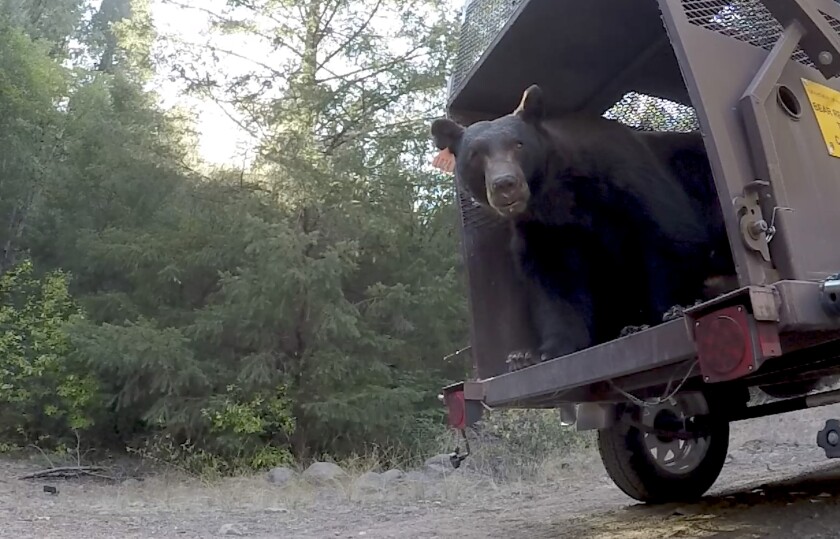A 10-year-old black bear burned in the North Complex fire has been released back into the wild after an innovative treatment helped heal his scorched feet, wildlife veterinarians said.
Officials with the California Department of Fish and Wildlife found the 370-pound bear in mid-September near the town of Berry Creek in Butte County, where the North Complex blaze has burned more than 318,000 acres since igniting Aug. 18. All four of the animal’s paw pads had been burned and he was unable to walk on his own.
After tranquilizing the bear, officials transported him to the Wildlife Investigations Laboratory in Rancho Cordova, where he was evaluated by Fish and Wildlife veterinarians Deana Clifford and Emma Lantz. His lungs were damaged from smoke inhalation, his paws were badly burned and he had a minor eye injury.

Paw pad injuries are common for animals in wildfires, Clifford said, noting that when the tender tissue is damaged, it can present significant problems.
“That’s the challenge,” she said. “If they can’t walk, they can’t find water and they can’t find prey. … They become stuck.”
The bear’s rescue was the result of a partnership between the California Department of Fish and Wildlife and the UC Davis School of Veterinary Medicine, which banded together in the midst of California’s worst-ever wildfire season to find and treat animals injured by flames. Dubbed the Wildfire Disaster Network, the group comprises veterinarians, wildlife biologists, ecologists, trained animal care volunteers and rehabilitation centers.
Afterward, he was kept in a quiet enclosure for several days and monitored around-the-clock with a remote camera. The bear’s appetite remained healthy throughout recovery, and he even put on weight, but officials were eager to take him home.
“These are free-ranging animals that have never been in a cage,” Clifford said, “and so this is not an ideal situation for them. What is ideal is for us to get them back in the wild.”
The bear quickly ran back into the wilderness and even managed to pull off his tracking collar along the way.
He was the first of several animal patients this year. The Wildfire Disaster Network is now treating a female mountain lion from the Bobcat fire in Los Angles County that arrived on Sept. 21, and a 520-pound bear from the Zogg fire in Shasta County that arrived Sept. 30.
“It’s likely that we will receive more wildlife with burns,” Clifford said. “We are only halfway through the regular fire season.”



Leave a Reply